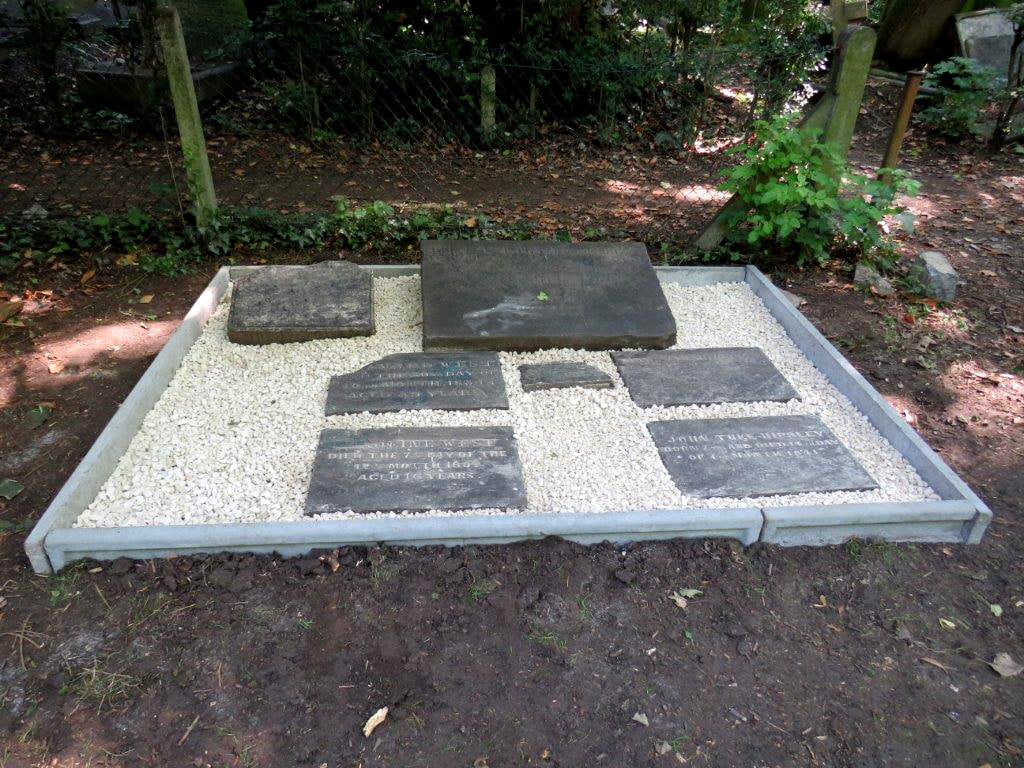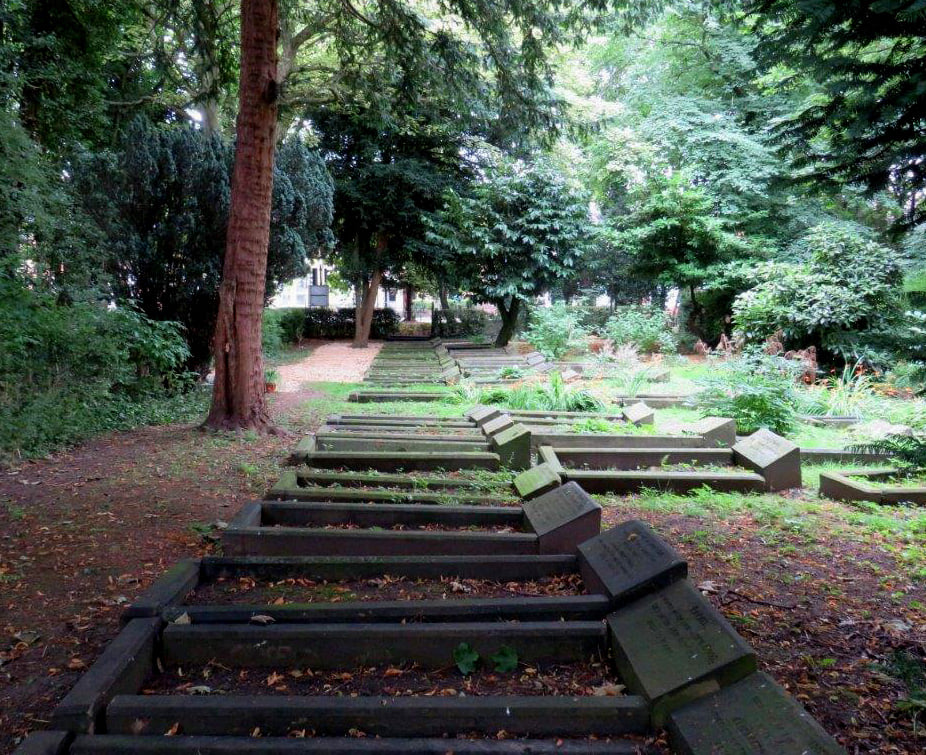Activities in Hull General Cemetery during August.
Most of the work in the cemetery during August was taken up with upgrading of the Quaker Burial Ground. This work was undertaken on behalf of the Quaker’s Committee.
The Matthew Good Foundation kindly donated £1,000.This was used for the purchase of trees, plants and materials to carry out the work.
The broken perimeter hedge/fence was repaired and new defensive planting installed. This was done to form just 2 entrances/exits. The privet was given a light trim.

A kerb and limestone chippings were placed around the 7 stones that originated in the Hodgson St and Owstwick Burial Grounds. This provides a great focal point for these historically important stones. The Quaker’s are looking to provide an information board to explain the origin of the stones. There already is a board explaining the presence of the Quaker burial ground.
The dilapidated headstone of Joseph Heward, the first Quaker burial in the cemetery, was re-laid and straightened. Several other fallen kerb stones were straightened. Moss was carefully removed from the lettering on the headstones to enable them to be more easily read.

A ‘Rest and Contemplation’ bench was erected in the SW corner. This was formed from a large sycamore branch that fell near the cholera monument a year or so ago.
Other fallen branches were chipped and laid as a path leading from the 2 entrances to the new bench.
New planting
The laurel bushes were pruned back to give a more formal appearance. Several shrubs and plants were planted to complement the existing plants. These including Fatsia Japonica, Choisya, Euonymus, Agapanthus and ornamental grasses.
A thousand spring bulbs have been ordered for planting in Autumn. These include wild garlic, English bluebells, snowdrops, crocus and daffodils. Hopefully these will provide a riot of colour in the spring.
A specimen laburnum was also planted to provide early summer colour after the bulbs have finished their display.
A shallow watering dish was placed in a shady area of the burial ground. This will provide a water source for birds and small mammals.
A short, on-site, talk about the Quakers in Hull and the work of the Friends of Hull General Cemetery, was given by the Quakers on the afternoon of Saturday 21st August.
The volunteers gave a guided tour around the cemetery to the U3A, AWAKE history group during August, generating £36.00 in donations.

Bill Longbone has had a long relationship with the Hull General Cemetery. He is an active member of the FOHGC and manages the work of the volunteers on the site. His biographical sketches of some of the people buried in the cemetery are one of the highpoints of the success of the Facebook site.




